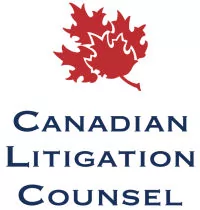Drivers communicate with each other through a number of means beyond the traditional use of indicators and horns. By waving or flashing headlights, drivers may determine who has the right of way or warn of dangers, mechanical issues, or even lurking speed traps. However, if the driver signaled to is subsequently involved in a motor vehicle accident, does the waving driver bear a portion of the blame?
Whether named by plaintiffs seeking to name another possible defendant from which to recover, or brought in to the action by a named defendant by third party claim seeking to diffuse liability among as many parties as possible, it is not unheard of to see a driver who waves to another named as a defendant in a personal injury action despite the fact that their vehicle did not collide with the Plaintiff.
In multiple jurisdictions across Canada, courts have been presented with the question of whether or not these informal methods of communication are sufficient to attract liability on the part of the waver, or to absolve the other driver of their responsibility to drive according to the applicable traffic safety regulation. Consistently, the consensus appears to be that waving actions, whether done to pedestrians or other drivers, do not expose the waving party to civil liability and are not relevant in determining the liability of the party actually involved in the collision.
In Alberta, this issue was most recently considered in 1999 in Irion v Debolt 1999 ABQB 1019. In that matter, a driver stopped at a crosswalk and waved at a child to proceed across. The child (Irion) began to cross the road in front of the first driver but was struck by a second vehicle as she attempted to cross the adjacent lane. In dismissing the action against the waving party, the court noted that the Highway Traffic Act requires drivers to yield to pedestrians at marked crosswalks, a duty that was indeed met. The wave itself was not a breach of the duty of care. Applying the "but for" test, the wave was merely a background event to the accident itself. No liability was placed on a waving party. This ruling followed an earlier Albertan decision in Boyarzin v Sissonn 26 AR 236, which involved a similar fact pattern.
Cases in other Canadian jurisdictions have also examined the issue of waving drivers in a number of other decisions – whether or not the waving party was actually named in the action.
In Newfoundland and Labrador (Noftall v Evely 2014 NLCA 30), British Columbia (Occhipinti v National Car Rental 2003 BCPC 314; Hiscox v Armstron 2001 BCCA 258), New Brunswick (Daigle v Turrett 2001 NBCA 38), and Ontario (State Farm Mutual Automobile Insurance Co v Aviva Canada Inc. 2015 ONCA 920), courts have all considered whether informal methods of communication attract civil liability when the waving party was not actually involved in the resulting collision. Almost universally, the determination was that no liability lies with the waving party.
Parties driving on Canadian roads must proceed with caution according to the appropriate rules of the road, regardless of what signals they may be getting from other drivers.
In contrast to the above case law, a single decision in British Columbia (Makonin (Guardian Ad Litem of) v. Chartrand, [1993] BCJ No. 28) found the waving party 40% liable for a Plaintiff's injuries, while the driver that actually struck the Plaintiff was only 35% liable. This decision stands in stark opposition to the majority of case law in Canada and was specifically rejected in the Irion decision. The court in Irion rejected the Makonin precedent, as the waving driver was not named in the action and no tort law analysis was given to justify the judge's decision. The judge himself noted in Makonin that the judgement did not bind the waving party in liability.
Given the number of courts from across Canada that have come to the complete opposite conclusion on liability, Makonin is the exception to the overall rule and is not an accurate statement of the law in any Canadian jurisdiction.
Whether as pedestrians or drivers, Canadians use a litany of informal means to communicate with each other while navigating their environments. These gestures, however, do not absolve Canadian drivers from adhering to applicable traffic codes – most notably not to make maneuvers unless safe to do so.
If a driver at an intersection sees another driver wave them through, they must first make sure the road is clear before proceeding. If they collide with another driver because they relied on the wave, they have no one to blame but themselves. To quote a well-known Russian proverb, drivers must "trust, but verify".
The author would like to thank Joe Sellman for his assistance in researching this article.
* * *
Brownlee LLP is a member of the Canadian Litigation Counsel, a nationwide affiliation of independent law firms .
The content of this article is intended to provide a general guide to the subject matter. Specialist advice should be sought about your specific circumstances.

